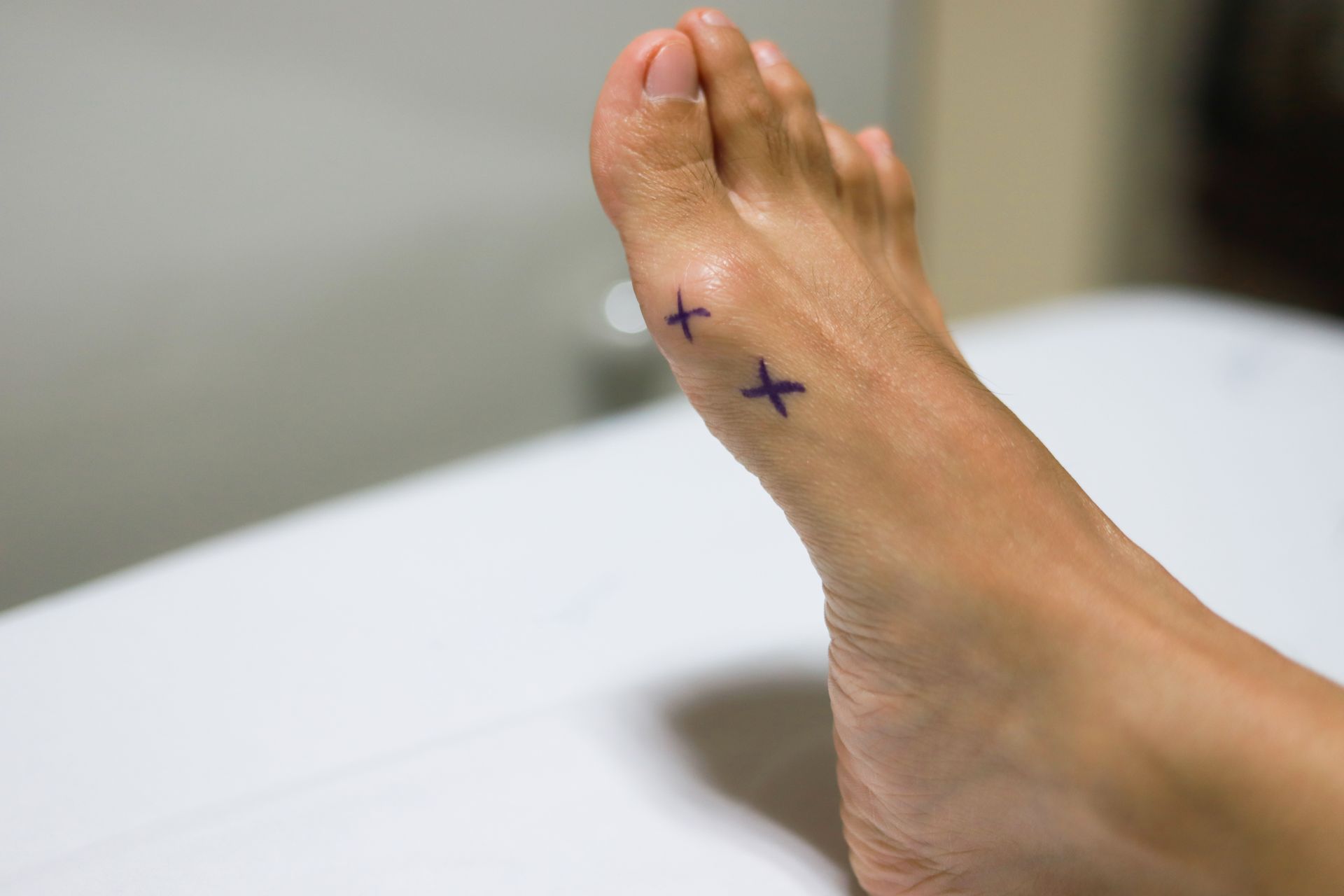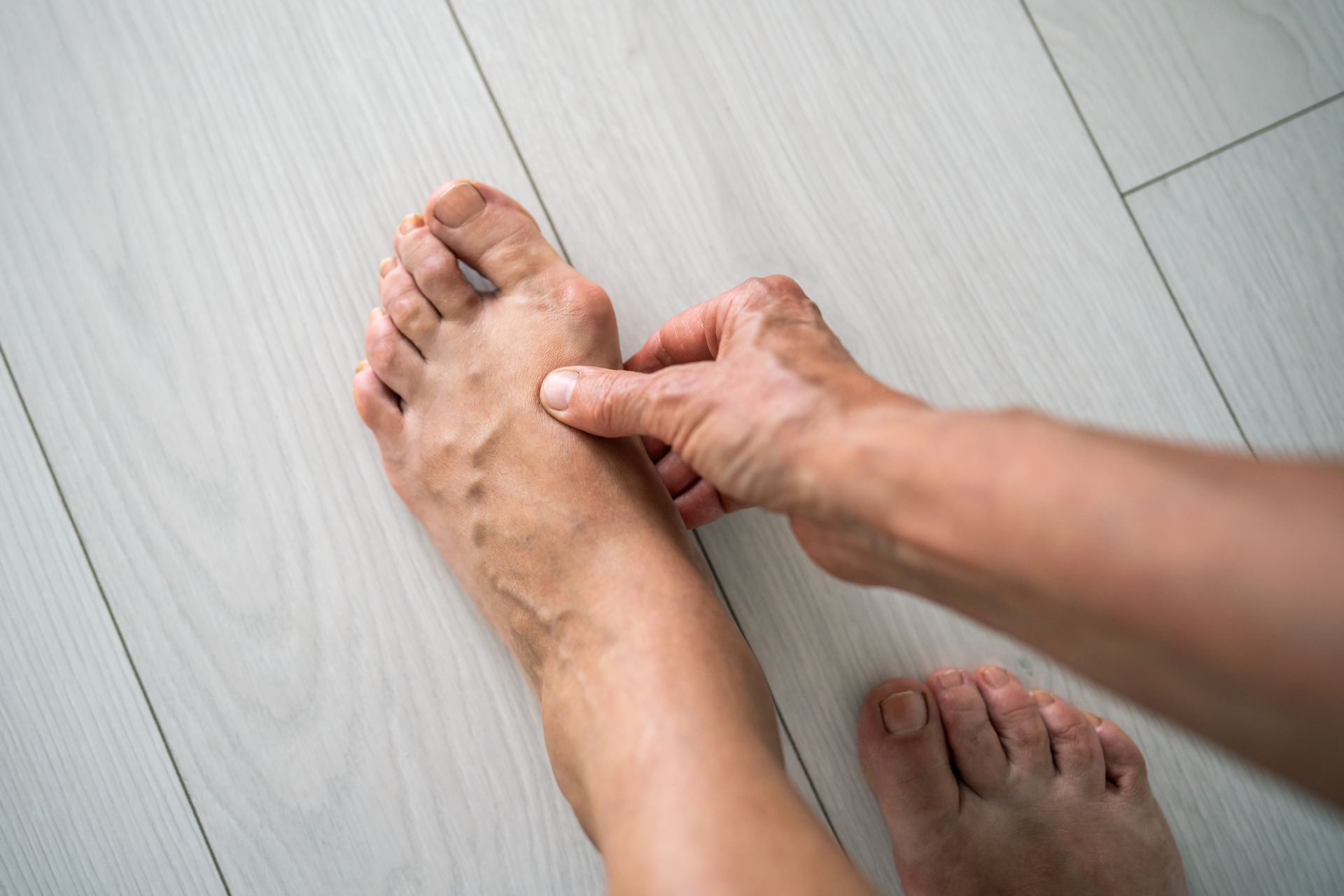Foot & Ankle Tendon Injuries and Common Causes
Tendon injuries within the foot and ankle can happen to anyone and can occur in a variety of ways. They can happen when playing sports, with a misstep off a curb, or even just as a result of wear and tear over time. Whether sudden or gradual, the important thing is for patients to understand these types of injuries, how they occur, and to take proper precautions to prevent them from happening in the future.
What is a Tendon?
A tendon is a rope that originates from a muscle and attaches to a bone. The purpose of a tendon is to pull, push or otherwise move a bone when a muscle contracts. In the foot and ankle, tendons assist in extension and flexion of the ankle joint and are necessary for normal walking, running and to help stabilize the foot and ankle for balance, particularly on uneven surfaces. Each tendon has an amount of stretch or elasticity. When that stretch is exceeded or a tendon is put under too much pressure, it can tear or rupture.
How are Foot & Ankle Tendons Injured?
Tendons can tear, or rupture in a few basic ways. This post focuses on the two most common ways that a tendon is damaged: acute tear and repetitive strain. These two different mechanisms often result in different types of tendon injuries.
Foot & Ankle Acute Tendon Tear
This is what is often envisioned
when considering tendon injuries. With an acute tear, a tendon like the Achilles
tendon
undergoes a sudden amount of tension or pressure and tears completely in
half. This can happen jumping for a basketball rebound, chasing a soccer ball,
or stepping in a hole in the yard. The result is two separate pieces of tendon,
no longer in contact, like cutting a boat rope in half. An acute tear is sudden
onset and results in a non-functioning tendon that no longer pulls or pushes
when a muscle contracts. The Achilles tendon is the most common tendon in the
foot and ankle to undergo an acute tear because of the tremendous force that
passes through it during physical activity.
Repetitive Strain of Foot & Ankle Tendons
As opposed to a sudden or acute
tendon tear, a repetitive strain tendon tear happens over a prolonged time.
Gradual overuse or excessive pull by a tendon will weaken it. The body
surrounds the weakened tendon with an inflamed tissue called synovitis. If the
excessive use of the tendon continues, then small split tears can develop
lengthwise along the tendon (like cutting a green bean along the crease). Sometimes the tendon will then develop a thick
scar or callus around these split tears to protect the tendon from continued
deterioration. In this instance, a tendon can still function with pulling or
pushing, but it often does so with pain, localized swelling and weakness.
One of the most common tendons in the foot and ankle to undergo repetitive strain tearing is a pair of tendons called the peroneal tendons. These two tendons run along the outside of the ankle joint and prevent the foot from rolling too far inward during a severe sprain. The peroneal tendons are also important to stabilize the foot and ankle on uneven surfaces.
If you believe that you have suffered an injury to a tendon in your foot or ankle, it is important to quickly seek medical attention to determine the extent of your injury. This will not only help bring relief from any pain or discomfort, it will also help ensure that the condition is treated properly, allowing for complete healing.


